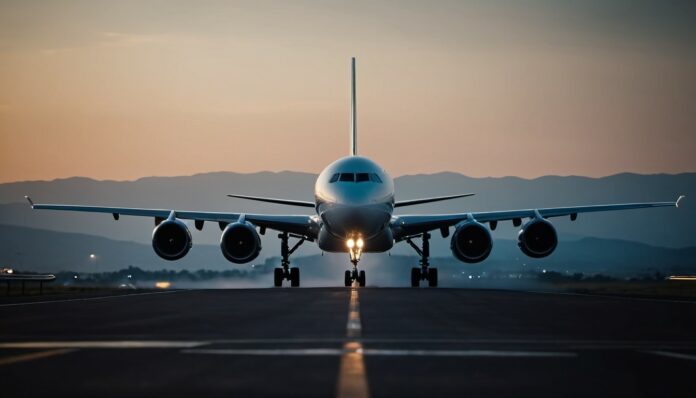As an airplane prepares for takeoff, it is towed from its parking spot by a tug, travels along the taxiway to the runway, calmly reaches its end, then stops and suddenly accelerates to finally lift off into the sky. But what speed must an airplane reach to take off?
Takeoff Speed
The required takeoff speed varies for each type of aircraft and can change depending on weather conditions, load, wind direction, and runway length. Pilots consider all these factors before initiating a flight. Let’s examine the takeoff process of a classic passenger airplane, the Boeing 737.
Engine Acceleration:
Before the plane can begin its runway dash, the engines need to rev up. Pilots hold the plane in place using brake pedals until the engines reach around 800 RPM.
Initial Acceleration:
The pilot releases the brakes, and the plane starts accelerating down the runway. At a speed of 180 km/h, the pilot pulls the control yoke back. The nose gear lifts off the ground, and the plane continues to accelerate on its main gear.
Liftoff Speed:
The aircraft leaves the ground at a speed of 220 km/h.
As mentioned, these values differ depending on the type of aircraft and other factors. On average, the largest passenger aircraft, the Airbus A380, requires an acceleration to 269 km/h for takeoff, the Boeing 747 needs to reach 270 km/h, and the Soviet Yak-40 requires only 180 km/h.
With strong headwinds, these values decrease, while tailwinds require higher speeds for takeoff.
Decision Speed
This term doesn’t refer to how quickly pilots make decisions but to the maximum speed during takeoff at which, in the event of a critical equipment failure, the takeoff can be safely aborted. It is a critical moment when the captain decides whether to continue or abort the takeoff and return to the parking spot. If the plane has accelerated beyond this decision speed and a failure occurs, the pilots must continue the takeoff and then proceed to land.
Decision Height
This term refers to the minimum height during the approach when the captain must determine whether the plane can land safely or needs to go around. A safe landing is possible if the pilot has a clear view of the runway, the plane is flying at the correct speed and altitude, and is properly aligned with the runway. If these conditions are not met, the plane must go around and attempt to land again.
Understanding these aspects of aviation helps appreciate the complexity and precision involved in every takeoff and landing, ensuring the safety and efficiency of air travel.
